Bedsores, also known as pressure ulcers, can be a serious concern for individuals who are immobile or bedridden. These painful wounds occur when pressure on the skin and underlying tissues restricts blood flow, leading to tissue damage.
However, pressure relieving mattresses, especially airflow mattresses for pressure sores, have emerged as an effective solution to prevent and alleviate these injuries.
In this article, we will explore how airflow mattresses work to prevent pressure sores, their benefits, and how they align with NICE guidelines for pressure ulcer prevention.
Explore Our AirFlow Mattress
Jump straight to…
-
- NHS UK & NICE Standards
- Understanding Bedsores and the Importance of Pressure Relief
- How Airflow Mattresses Work to Prevent Pressure Sores
- Benefits of Pressure Relieving Mattresses for Patients and Carers
- Profiling Beds and Choosing the Right Equipment
- Compliance with NHS UK and NICE Guidelines
- Conclusion
- FAQs
NHS UK & NICE Standards
The National Institute for Health and Care Excellence (NICE) provides national health and social care guidance and advice for the whole of the UK. When it comes to the NHS, NICE work to:
- Independently assess the value of new/existing treatments and interventions
- To ensure front line professionals, the public and patients have access to the latest treatment, advice, and guidance.
With these stated aims, NICE can therefore be used as a good reference point for NHS UK ‘best practice’ techniques for pressure ulcer care.
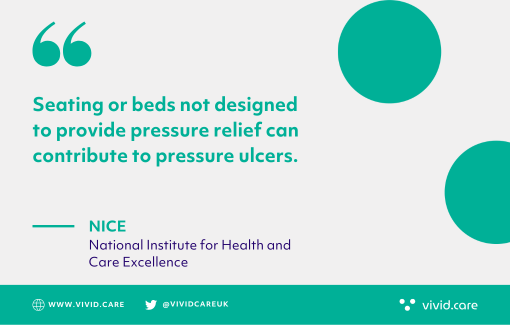
NICE Quality Statement 8 which covers pressure redistribution devices such as profiling beds beds and airflow mattresses recommends that “People at high risk of developing pressure ulcers are provided with pressure redistribution devices.”
According to NHS UK, individuals at risk of pressure injuries should be provided with an appropriate support surface, such as a medical airflow mattress, to aid in pressure redistribution.
NICE recommends that alternating pressure mattresses be considered for individuals with existing pressure ulcers, as they can promote healing and prevent further deterioration.
Healthcare Professional Tip:
- Utilise medical airflow mattresses with alternating pressure technology
- They provide optimal pressure redistribution for bedridden or low mobility patients
- Regularly assess the patient’s condition and adjust the pressure settings as needed
Understanding Bedsores and the Importance of Pressure Relief
Pressure ulcers occur when constant pressure limits blood flow to certain parts of the body, causing tissue damage. Those who spend extended periods in bed or have limited mobility are at higher risk. Areas like the hips, tailbone, and heels are especially vulnerable, making pressure relieving mattresses crucial for care.
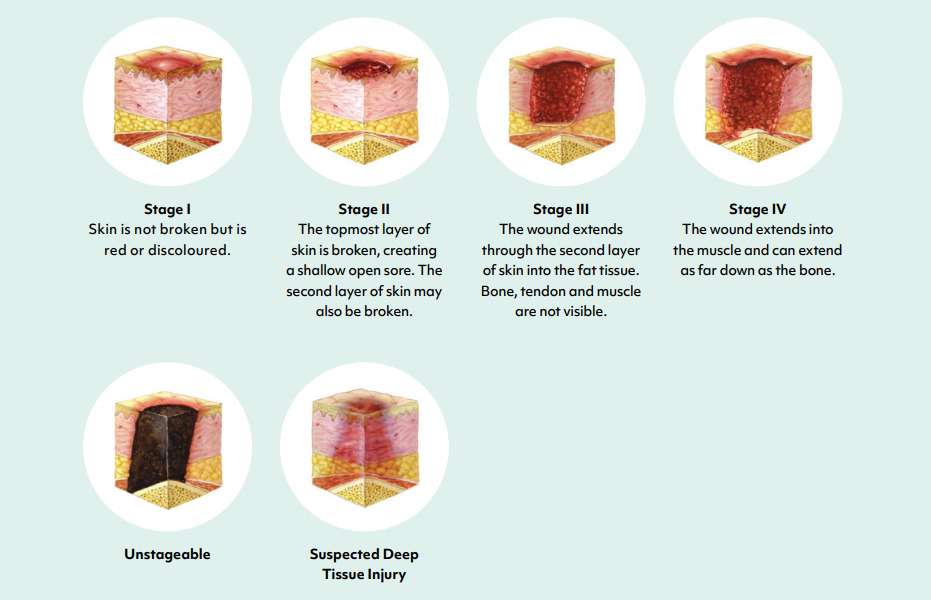
Stages of pressure sore injury
How Airflow Mattresses Work to Prevent Pressure Sores
Airflow mattresses for pressure sores use advanced alternating pressure technology with air-filled cells. These cells inflate and deflate in cycles to redistribute pressure evenly across the body. This process ensures no area remains under constant pressure, reducing the risk of developing pressure sores.
• Alternating Pressure Technology: Alternating inflation and deflation cycles improve blood flow, maintain healthy tissue, and aid in pressure sore prevention.
• Microclimate Control: By managing the temperature and moisture around the skin, airflow mattresses help prevent moisture build-up from sweat or humidity. NICE guidelines emphasize the importance of maintaining a dry environment to minimize the risk of skin breakdown.
• Moisture Management: Keeping the skin dry is critical to reducing the risk of pressure ulcers. Airflow mattresses for pressure sores often include low air loss systems that circulate air, keeping the skin cool and reducing moisture.
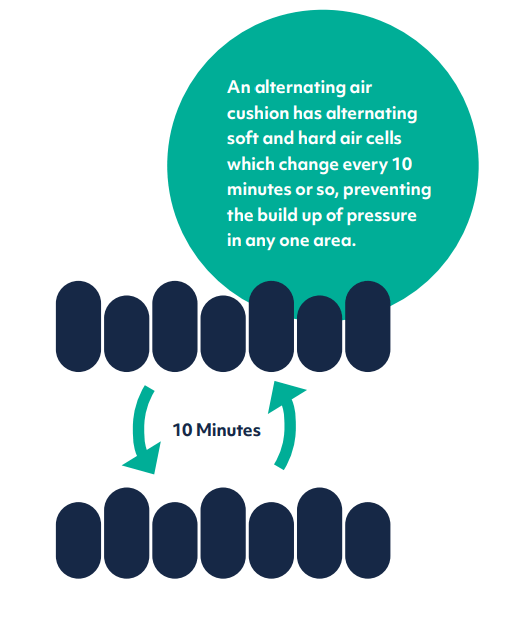
Alternating Airflow is used to care for patients at the highest risk of pressure injuries.
Maintaining Skin Dryness and Comfort
Excessive moisture from sweating can increase the susceptibility to bedsores so many medical airflow mattresses feature a specialised system that manages moisture and keeps the skin dry.
These pressure care mattresses facilitate air circulation, preventing moisture build-up on the patient’s skin and maintaining a comfortable and dry environment. This feature is particularly beneficial for individuals who sweat or have limited mobility.
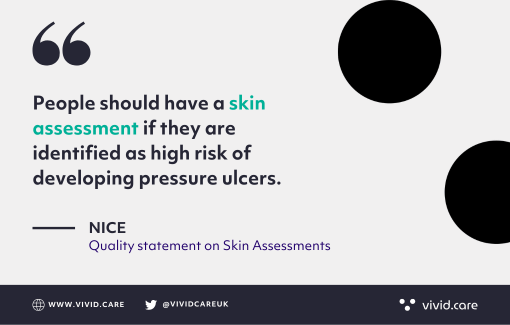
Microclimate Control
Maintaining a healthy microclimate around the skin is crucial for preventing pressure sores. Excessive moisture, such as sweat or trapped humidity, can soften the skin and make it more vulnerable to damage.
Medical airflow mattresses incorporate microclimate control features to manage moisture effectively.
Some mattresses have a low air loss system that circulates air through the mattress surface, reducing perspiration and maintaining a dry environment. The continuous airflow through the mattress surface reduces moisture buildup, enhancing patient comfort and minimising the risk of skin breakdown.
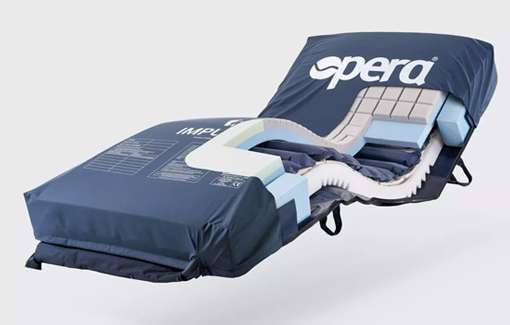
This helps keep the skin cool and dry, minimising the risk of skin breakdown. This feature is particularly beneficial for individuals prone to sweating or with limited mobility.
Healthcare Professional Tip: Incorporate medical airflow mattresses with low air loss systems into care plans for patients at risk of moisture-related skin breakdown. Regularly monitor the patient’s skin condition and adjust the airflow settings to maintain a dry and comfortable microclimate.
Pressure Relief and Shear Reduction
One of the main ways medical airflow mattresses prevent bedsores is by relieving pressure on vulnerable areas.
These mattresses have air-filled cells that inflate and deflate in a cycle, ensuring that no single area is under constant pressure. This helps minimise the risk of tissue damage and promotes better skin health.
What’s more, medical airflow mattresses address the issue of shear and friction, which can contribute to the development of bedsores. The cushioning effect of the air-filled cells reduces the forces that occur when the skin moves against the mattress.
By minimising shear and friction, these mattresses protect the skin and promote healing.
Repositioning and Pressure Relief
Regular repositioning plays a vital role in preventing bedsores. NHS UK advises healthcare professionals to establish repositioning schedules for individuals at risk.
Medical airflow mattresses complement this strategy by providing effective pressure relief, reducing the need for frequent manual repositioning.
By relieving pressure on specific areas and promoting better blood circulation, these mattresses significantly minimise the risk of bedsores, providing relief to caregivers and improving the overall comfort of patients.
Healthcare Professional Tip:
Develop a comprehensive care plan that combines regular repositioning with the use of medical airflow mattresses. Optimise patient comfort and pressure relief by incorporating alternating pressure settings and ensuring appropriate pressure redistribution throughout the day.
Support and Comfort
Medical airflow mattresses are designed with the comfort and well-being of the individual in mind. They are made of high-quality materials that provide support and proper alignment for the body.
Some mattresses use advanced foam technologies, such as memory foam, that conform to the body’s contours, reducing pressure points and ensuring optimal comfort.
By supporting the body’s natural curves and distributing the weight evenly, these mattresses relieve pressure on vulnerable areas, enhancing overall comfort and reducing the risk of pressure sores.
Benefits of Pressure Relieving Mattresses for Patients and Carers
Pressure relieving mattresses offer several benefits to both caregivers and patients, including:
• Enhanced Blood Circulation: Proper pressure redistribution improves blood flow to tissues, reducing the risk of pressure ulcers.
• Pain Relief: Alternating pressure reduces discomfort by alleviating pressure on sensitive areas.
• Reduced Caregiver Strain: By providing continuous pressure relief, airflow mattresses reduce the frequency of manual repositioning needed, easing the strain on caregivers.
Benefits for Carers:
Medical airflow mattresses offer significant benefits to carers, enhancing their ability to provide quality care. The table below highlights some key advantages:
Benefits for Patients:
Medical airflow mattresses prioritise patient comfort and well-being while preventing bedsores. Here are some notable benefits:
Profiling Beds and Choosing the Right Equipment
In addition to medical airflow mattresses, the use of profiling beds and selecting the right equipment is crucial in preventing bedsores and ensuring optimal comfort for bedridden or low mobility individuals.
Profiling beds are specially designed beds that can be adjusted to various positions, allowing for customisation according to the patient’s needs. These beds offer a range of benefits that contribute to pressure injury prevention:
When choosing the right equipment for pressure injury prevention, it is essential to consider the specific needs and condition of the individual.
Healthcare professionals and caregivers should follow the guidelines provided by NHS UK and NICE regarding the correct usage of equipment, including selecting the right mattresses and regularly ensuring their functionality.
Healthcare Professional Tip:
- Combine the benefits of medical airflow mattresses with profiling beds to achieve optimal patient positioning and pressure distribution.
- Educate caregivers on the correct use of profiling beds and equipment to enhance patient comfort and reduce the risk of pressure injuries.
Compliance with NHS UK and NICE Guidelines
Choosing the right pressure relieving mattress is essential for effective pressure sore prevention and management. Healthcare professionals should follow NICE guidelines to ensure that pressure relieving devices like airflow mattresses are used appropriately. This compliance ensures a high standard of care and helps achieve better outcomes for patients.
Healthcare Professional Tip:
- Familiarise yourself with the latest NHS UK and NICE guidelines regarding pressure injury prevention and the use of medical airflow mattresses.
- Stay updated on any changes to ensure your care practices align with the best standards of care.
Conclusion
Airflow mattresses play a critical role in the prevention and management of pressure ulcers. By providing pressure relief, reducing shear forces, and maintaining a healthy skin microclimate, they offer comfort and promote healing.
Complying with NICE guidelines and integrating these mattresses into care plans ensures optimal support for individuals at risk, improving their quality of life and providing peace of mind to caregivers.
Investing in medical airflow mattresses not only ensures optimal care for patients but also improves their quality of life. With their significant advantages and potential to alleviate bedsores, these mattresses continue to be a valuable asset in the healthcare industry.
Explore Our AirFlow Mattress
FAQs
What is a pressure relieving mattress according to NICE guidelines?
A pressure relieving mattress, as per NICE guidelines, is designed to redistribute pressure and reduce the risk of pressure ulcers in patients with limited mobility. NICE recommends using alternating pressure mattresses for individuals at high risk, ensuring that pressure is not concentrated on any single area of the body.
How does an airflow mattress help prevent pressure sores?
An airflow mattress helps prevent pressure sores by using air-filled cells that inflate and deflate in cycles. This alternating pressure technology redistributes pressure evenly across the body, reducing the risk of tissue damage and promoting better blood circulation.
Are airflow mattresses suitable for treating existing pressure ulcers?
Yes, airflow mattresses are suitable for treating existing pressure ulcers. They promote healing by ensuring continuous pressure relief and maintaining a dry environment, which is crucial for skin integrity. NICE guidelines suggest using alternating pressure mattresses for patients with existing sores to prevent further deterioration.
What is the difference between a low air loss mattress and an alternating pressure mattress?
A low air loss mattress circulates air to control moisture and keep the skin dry, while an alternating pressure mattress actively inflates and deflates cells to redistribute pressure. Both types are effective for pressure ulcer prevention, with low air loss systems focusing on moisture management and alternating pressure systems providing continuous pressure redistribution.
When should a pressure relieving mattress be used?
A pressure relieving mattress should be used for individuals who are bedridden or have limited mobility, especially those at risk of developing pressure sores. According to NICE guidelines, patients who cannot move independently should be provided with pressure redistribution devices to prevent the occurrence of pressure ulcers.













